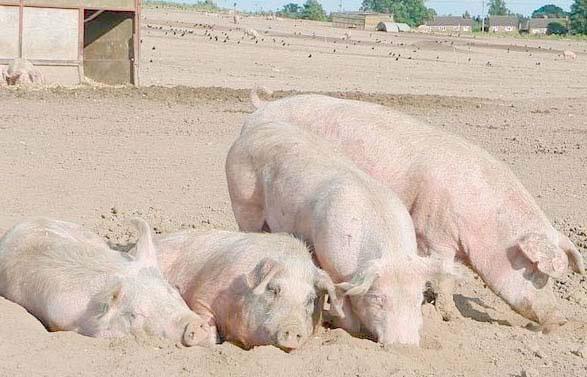
2014 has seen a devastating epidemic of porcine epidemic diarrhoea (PED) in the USA, affecting more than 30 states and driving up the price of pork products.
Later today, Professor Wim van der Poel will tell delegates at the Society for Applied Microbiology annual Summer Conference how veterinary laboratories in Europe are working together to implement reliable diagnostic tests that ensure preparedness for the potential emergence of PED virus in Europe.
Professor van der Poel said “This is a serious epidemic of disease, which is affecting animal welfare as well as jeopardizing the livelihoods of farmers and driving up the price of pork for the consumer. To halt an epidemic like this, we have to respond very rapidly to new outbreaks of disease and for that we need fast and reliable diagnostic tests.”
The team at the Central Veterinary Institute of Wageningen University in The Netherlands use a combination of classical microbiology and new techniques such as microarray, PCR, next generation sequencing, and bioinformatics to develop new approaches to detect, identify, and characterize microbes that are responsible for new and emerging infectious disease outbreaks.
In the case of PED, it is not a new microbe. The virus has been circulating in Europe since the early 1980s, and now a variant of this virus is circulating in the US, Canada and China. For rapid diagnostic response in case of a potential introduction of this virus to Europe, five veterinary laboratories united in the CoVetLab group have started a project for the development, validation and implementation of a PCR assay to detect PED virus, and immunoassays to detect antibodies against PED virus in the blood of infected pigs. The idea is that laboratories in Europe will be able to run these as soon as possible, to rapidly identify the cause of any outbreak of diarrhoea in pigs.
“Being able to rapidly diagnose an outbreak puts us in a much more powerful position,” says Professor van der Poel. “There are many causes of diarrhoea, so first we have to confirm that it is in fact the PED virus and then appropriate action can be taken, including the implementation of strict biosecurity on the affected farm.
“We may also need to put more effort in developing an efficacious vaccine to protect younger animals born in future.”
The current epidemic of disease in the USA began with the first cases being identified in May 2013 and, in recent months, this extremely contagious viral disease has torn through the USA’s pig industry, wreaking havoc.
Only pigs are affected – there has not been any evidence of transmission to other animals, including humans. Pigs are affected at any age and the disease is usually fatal to a large number of piglets in a farm, due to higher susceptibility of their gut cells to the infection, as well as dietary factors and a slower rate of healing in the guts of suckling piglets. Once animals are weaned, it is unlikely to be fatal, but the potential for onward transmission is great, and there is a possibility of reduced productivity.
